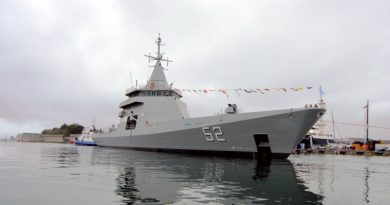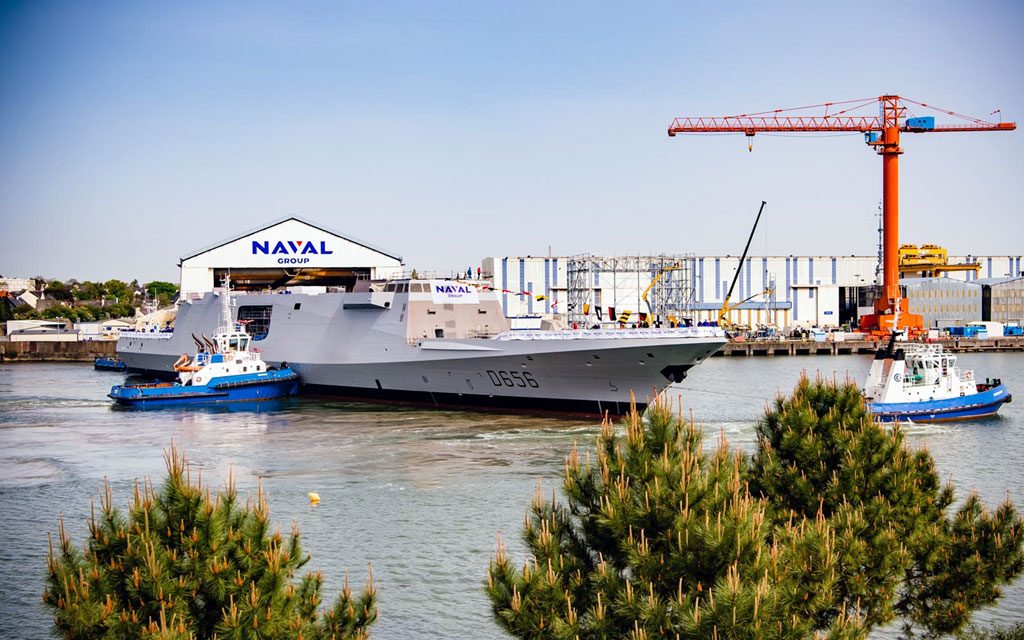
The Naval Group’s surface platforms’ industrial process evolution
The Naval Group “center of excellence” of for the design and construction of surface platforms and other future main programmes is in the midst of an industrial revolution which will project the company and the site in the digital shipbuilding era.
Speaking on last 24 October during the steel cutting ceremony for the first ‘digital native’ FDI at the Morbihan site (Lorient), the Naval Group’s surface platforms center of excellence, the company’s CEO Hervé Guillou has highlighted the strong efforts made by the company to significantly improve its efficiency, and therefore its competitiveness, on the international market and to offer revolutionized capabilities to the French Navy.
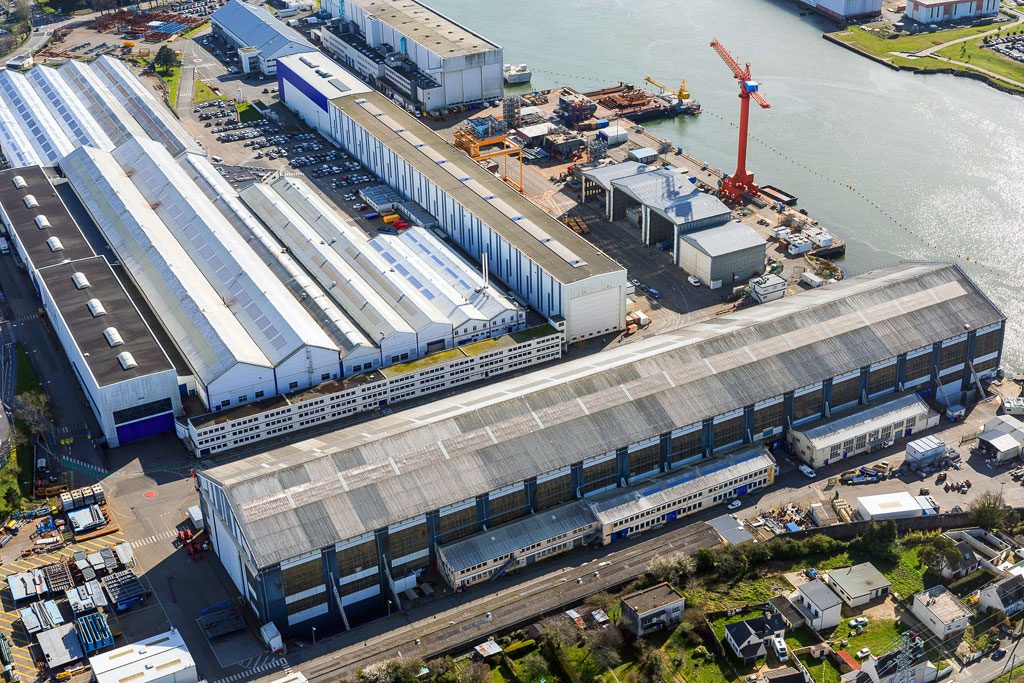
“If we will respect our commitments, this will not only be due to the integrated set-up with the teams of the DGA and the Navy, and the mobilization of all the industrial players, but also to the investments made by Naval Group at Lorient, that are a direct benefit of the FDI (frigate) programme. In two years (2018-2019), €27 million have been invested to renew our industrial tool and to improve safety, quality, costs and deadlines, our keyword being to remain both competitive and efficient. This dynamic is articulated around the C20/F30 objective: to produce a corvette in 20 months and a frigate in 30 months, which will have a proportional impact on our costs and our competitiveness”, the Naval Group CEO explained.
“This goal is also achievable thanks to the efforts made to digitize our industrial processes, with new design and production tools, such as augmented reality, the coupling of simulation tools with 3D models, and additive manufacturing. The solution that we name CDV (Cycle de Vie) or Life Cycle, born from our partnership with Dassault Systems, allows us for the first time in Europe to ensure, thanks to the digital twin, a total digital continuity since the development and the traceability of the operational needs, the design, the construction, until maintenance, repair and overhaul. We also adopted a new computerized production management system and industrial flows, FIRA (Flux Industriels et Référentiel Articles) in French. This shared tool allows us to have a reliable and up-to-date vision of the production and of our supply chain, in order to better control it and thus to keep the milestones”, he explained.
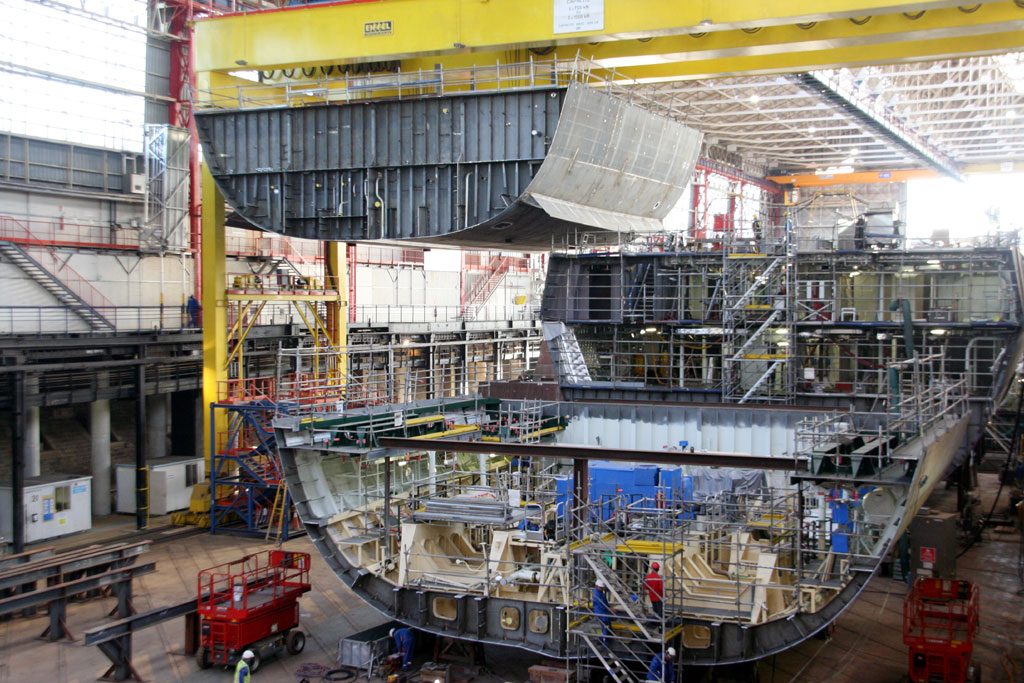
Since the last modernization of the Lorient site of more than 15 years ago, Naval Group has launched a new major investment plan of around € 40 million that started in 2018 and will last four years. As the neuralgic centre for surface ships’ design and integration, Naval Group’s Lorient facility is responsible for overall ship design and programme management, development and integration of platform and navigation systems, shore integration platform for ship conducting, shipbuilding and sea trials, involving the Naval Group site of Nantes-Indret mainly for propulsion, Bagneux for combat system integration, Ollioules (near Toulon) for the combat system, data centres and cyber security development and Angouleme – Ruelle for the ship equipment, i.e. the Sylver family of vertical-launch systems, ship-management systems and bridge equipment. On 6 September, Naval Group CEO inaugurated on the latter site a brand new 4,723 m² building facility known as ‘Innov Factory’, designed specifically to facilitate teamwork and open innovation, aiming at reducing the development time from design, to integration and then training.
The majority of the investments on the Lorient site go into improving competitiveness, which means a faster way of building ships. This represents a significant advantage as customers want shipbuilding programmes at short notice and time. While today the FREMM programme delivers ships in 48 months, the aim is to reduce it at 38 months for the new FDI with a final goal of 30 months for a new frigate. On the corvette side, the aim is to reduce the delivery time from the 28 months of the first Gowind family platform for the Egyptian Navy in September 2017 to the ambitious goal of 20 months.
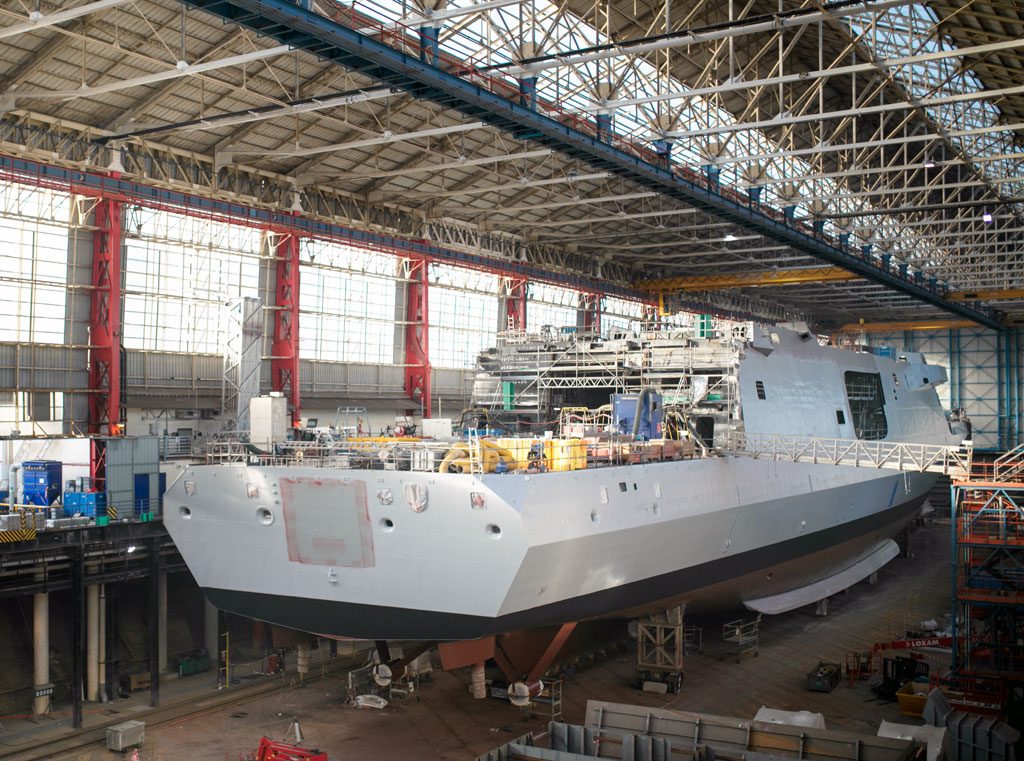
To achieve these goals, Lorient is reorganizing its industrial process and introducing new tools, with a focus on speeding up the activities on the production line, as well as introducing latest generation equipment such as new painting stations as well as new design tools such as the new digital 3DEXPERIENCE suite by Dassault Systèmes, as well as 3D table design and glasses. The outfitting of the blocks constituting the ship hulls will be pushed to its maximum and the organization of work is being rearranged. From the seventh FREMM, the first Air Defence ship that is the Alsace FREMM launched last April and visited during the press FDI steel cut tour, the majority of the activities on the ship after launch will be conducted on the left bank of the Scorff river, nearest to the shipbuilding area. The Lorient site is divided in two by the Scorff river: the shipbuilding area is on the opposite side (left) to the town, while on the latter one (right) we find the ships design and development building in addition to the docks. Previously, the hulls being outfitted were moved on the right bank at an early stage, while now the ships remain for a longer time on the left side near to the production area, increasing building efficiency. The shipbuilding area was also improved with the replacement of the old four painting booths with three new modules built to the latest standards, ventilated andat controlled temperature, improving painting quality and reducing time.
As a major example of the production process enhancements, the Naval Group CEO highlighted the development and introduction of the Panoramic Sensors and Intelligence Module (PSIM), which was applied to the Gowind corvette family of platforms. “The simultaneous and integrated design of the platform and the combat system, thanks to the PSIM, has already made it possible to optimize the industrial process by parallelizing the critical paths and thus gaining 12 months compared to ships of the previous generation”. The current shipbuilding covered and protected main hall, where the platform hull is assembled, continues supporting the Lorient site, and thanks to its shape and dimensions, it has been used in the past to build larger ships than those currently produced.
As remarked by Naval Group CEO, thanking the team headed by Laurent Moser, the Lorient site director, the modernization passes through the wider adoption of digitalization, as part of the ‘Factory of the Future’ project, with the adoption of the 3DEXPERIENCE suite, which allows to collaboratively design digital models of the entire boat, down to the smallest detail, taking into account changes and corrections in real time for all users. If the French shipbuilding group is not new to the use of digital tools for designing frigates, the new system represents another major step ahead. On November 2018, the Bureau Veritas, Naval Group and Dassault Systèmes announced that a 3D classification process has been applied to the FDI for the first time. Together the project partners aimed at enabling digital continuity to reduce the time and associated costs spent in design review, and to improve data accuracy and traceability by sharing information more effectively between different projects stakeholders. “Bureau Veritas can deliver the classification based on 3D model of the vessel, and Naval Group can ultimately increase the capability of its products and improve its competitiveness through more innovative processes”, said the joint statement.
A new collaborative platform bringing together all the design and industrialization teams of the FDI programme required other investments on the Lorient site in term of digital design, processing and building accommodations, as well as virtual reality rooms, already in place for a decade to better understand the spaces and layout of the equipment. The latter replace the old wooden models and design reviews with customers. Digitalization is being adopted in the construction process, tablets with 3D overlays allowing to check any physical interference replacing paper drawings on the assembly line. Moreover, Naval Group has begun to introduce 3D glasses for specific activities, as demonstrated during the press tour. The 3D glasses are also used for other platform and systems development and building, especially in the underwater and combat system domain.
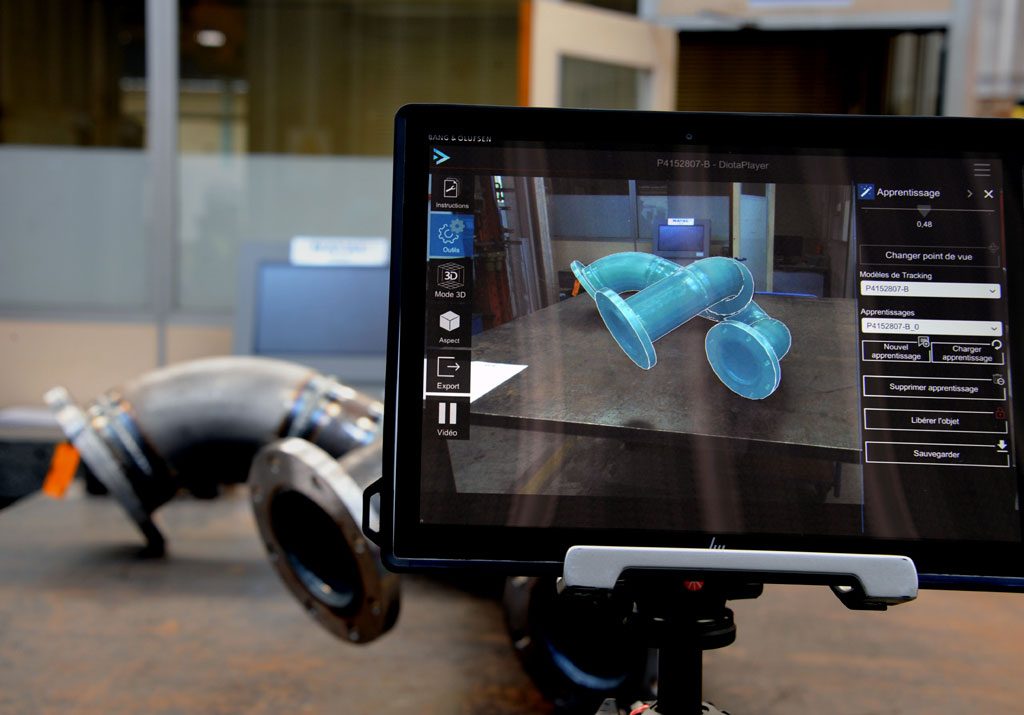
But the Naval Group’s Morbihan site in Lorient is more than a shipbuilding site. As remarked by the French shipbuilding CEO during the steel cut ceremony, “more broadly, it is this mastery of complexity, integrating the platform and its combat system, that we maintain and put at the service of our customers. It involves the physical integration of hundreds of thousands of components, combined with the functional integration capability of about one hundred systems, while marrying long-time programs and short time technologies. It is here [Lorient] that the Gowind [corvettes] were developed, and studies for the 3rd generation SNLE or ballistic nuclear submarine (SSBN) were conducted; this is where the platform of the Belgian-Dutch minesweepers is being developed”. The Naval Group CEO also highlighted that Lorient is the site that hosts the integrated platform and where the studies for the new-generation aircraft carrier, the PA NG (Porte-Avions de Nouvelle Generation) or the New Generation Aircraft Carrier for the French Navy are underway. “For this project, which promises to be exceptional – an aircraft carrier among the most complex systems that man ever developed – our integrated teams with our partners TechnicAtome and Chantiers de l’Atlantique are already working and are making every effort to meet deadlines and quality requirements, with controlled costs. We exploit all the experience and specific skills acquired by Naval Group and maintained for over 50 years (Foch, Clemenceau, Charles de Gaulle) on large complex programs such as the design, construction and maintenance of aircraft – which proved the success of the Arrêt Technique Majeur n°. 2 (ATM2) or the n. 2 Major Overhaul and Upgrading of the Charles de Gaulle aircraft carrier.
Photos courtesy Naval Group and by Luca peruzzi


